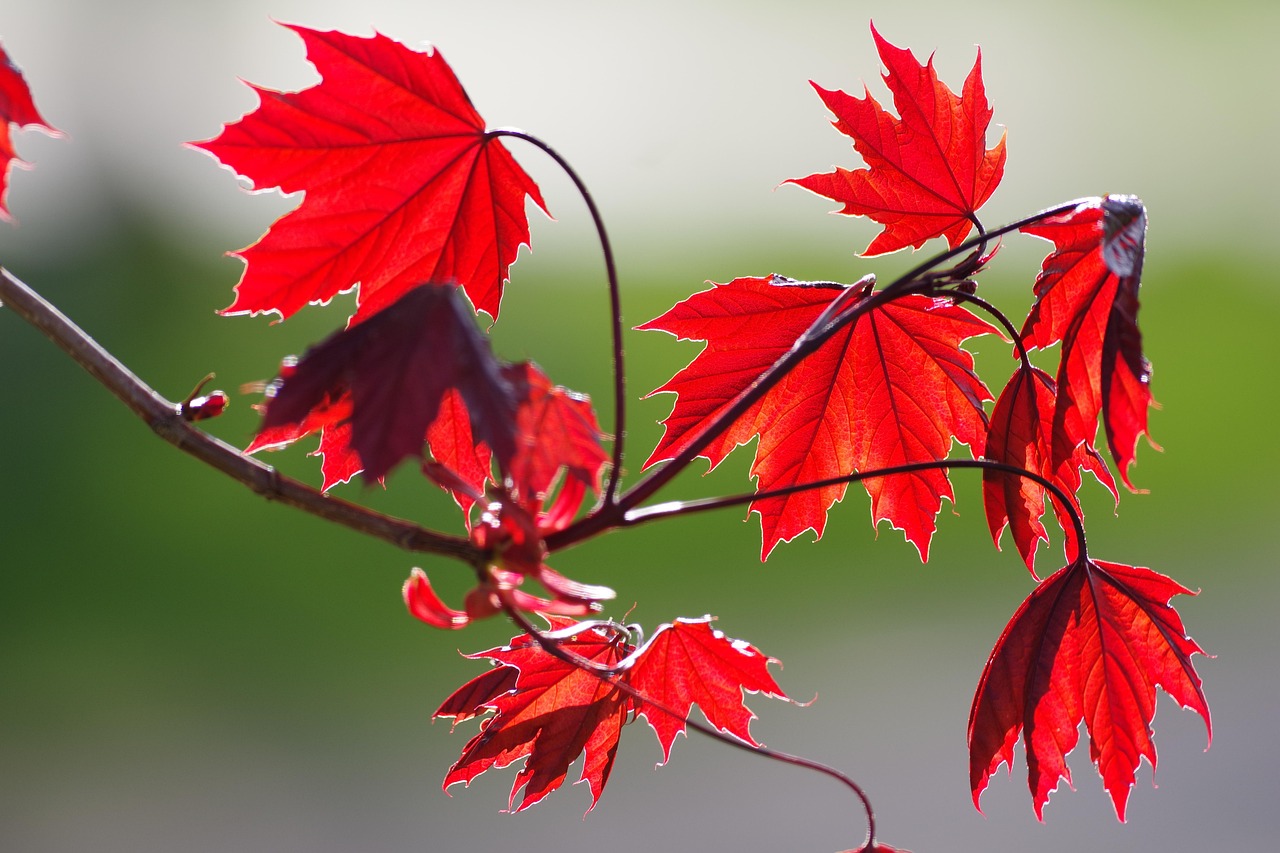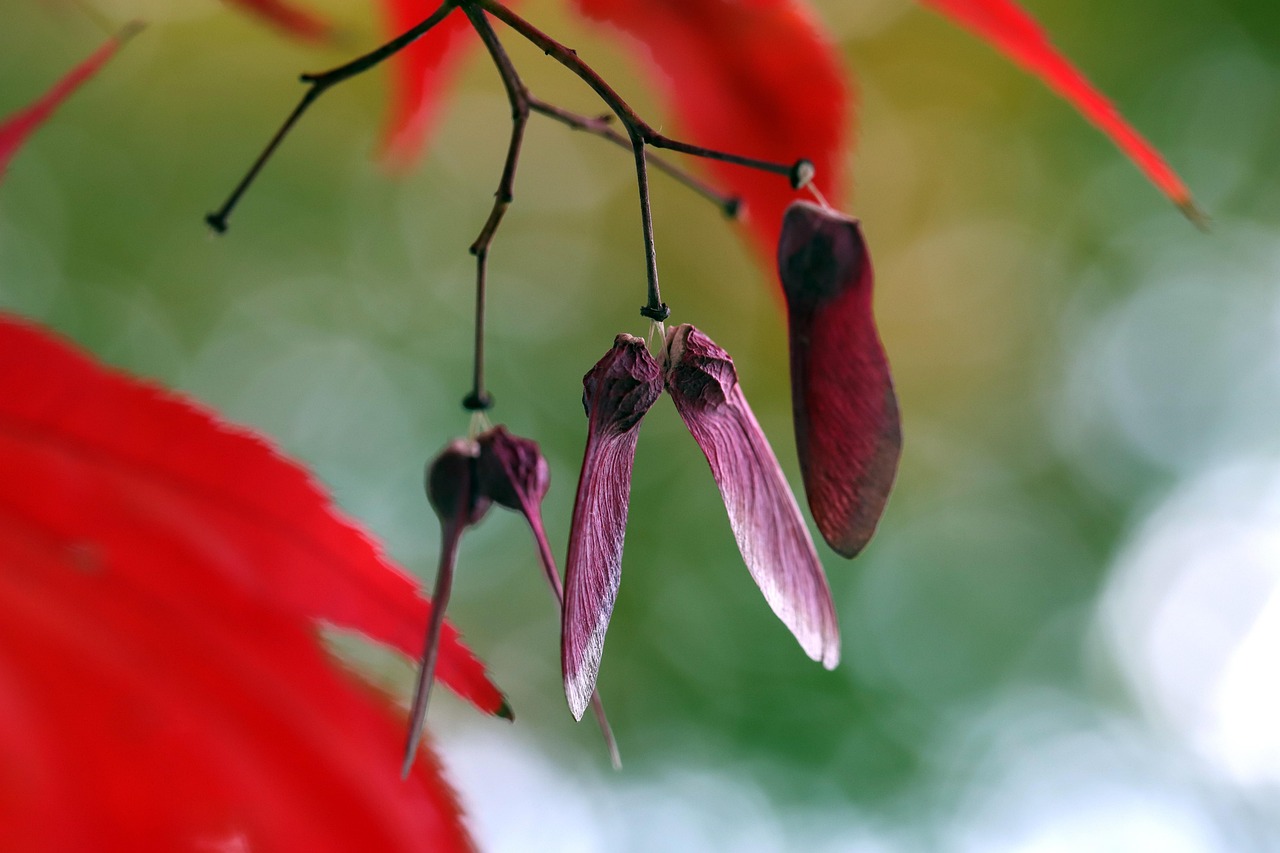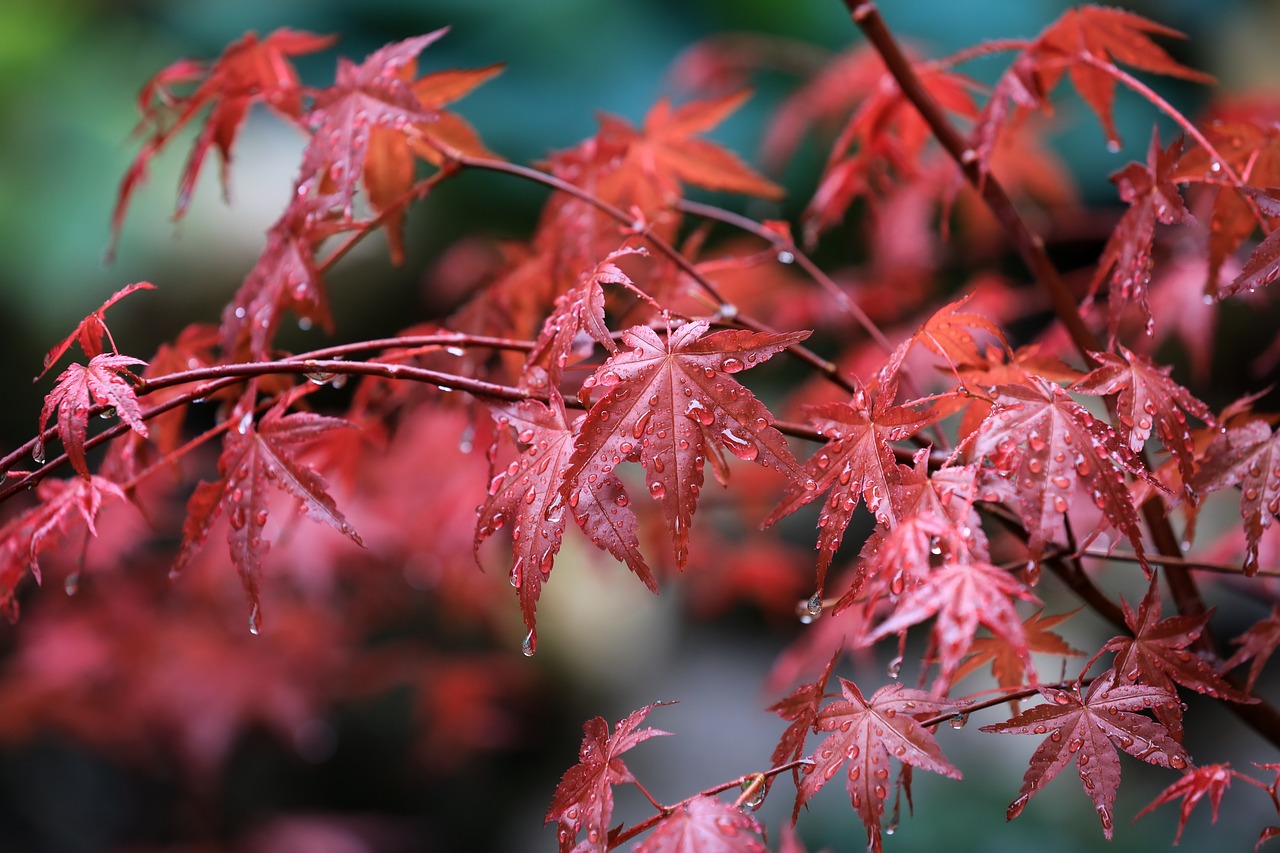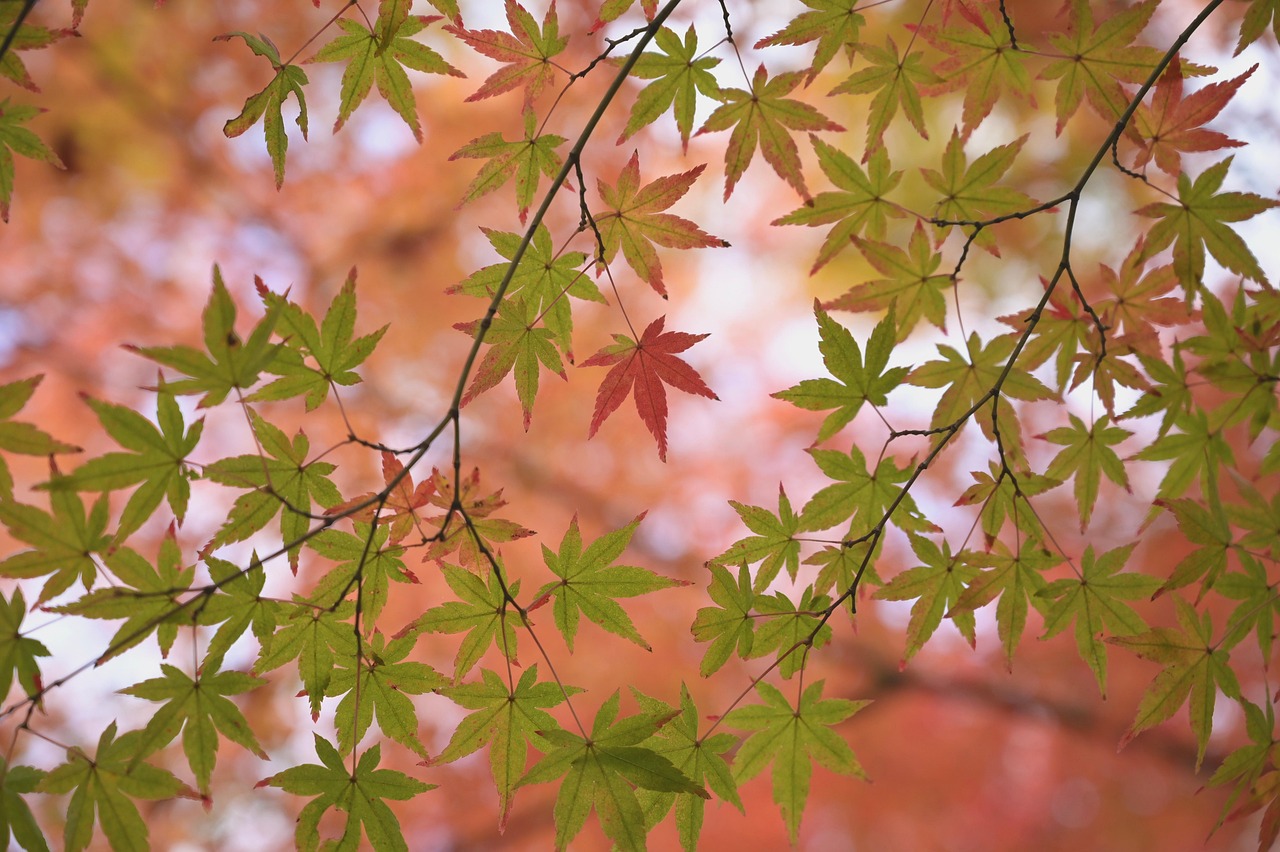Red maples are popular for their stunning fall foliage and adaptability. Proper care involves understanding their water, sunlight, and soil needs. Growth tips include choosing the right location and regular pruning. They are commonly used for shade, ornamental purposes, and wildlife habitats.
The red maple (Acer rubrum) is a deciduous tree native to North America. Known for its vibrant red leaves in the fall, it can reach heights of 40 to 60 feet and has a spread of 30 to 50 feet. This tree thrives in various soil types and conditions, making it a favorite among gardeners and landscapers. Its versatility allows it to be planted in urban areas as well as rural settings.
Red maples are also appreciated for their rapid growth rate, often adding 1 to 2 feet in height each year under optimal conditions. This makes them an excellent choice for those looking to establish a landscape quickly. In addition to their aesthetic appeal, these trees play a significant role in supporting local ecosystems by providing food and habitat for birds and other wildlife.
Understanding Red Maple Care

Caring for red maples involves several key practices that ensure healthy growth and longevity. The following aspects are vital for maintaining the health of a red maple:
- Watering: Red maples prefer moist soil but can tolerate short periods of drought. Regular watering is essential, especially during dry spells.
- Sunlight: These trees thrive in full sun to partial shade. Ideally, they should receive at least 4 to 6 hours of direct sunlight daily.
- Soil: Red maples adapt to a range of soil types but prefer well-drained, slightly acidic soils rich in organic matter.
It is important to monitor the condition of the tree regularly. Look out for signs of distress, such as wilting leaves or discoloration, which may indicate issues related to water or nutrient deficiency.
Growth Tips for Red Maples
To encourage healthy growth and vibrant foliage in red maples, consider the following tips:
- Selecting the Right Location: Choose a planting site that is spacious enough for the tree’s mature size. Avoid areas with heavy shade from surrounding structures or other trees.
- Fertilization: Apply a balanced fertilizer in early spring to promote healthy growth. Be cautious not to over-fertilize, as this can harm the tree.
- Pruning: Regular pruning helps maintain shape and encourages air circulation within the canopy. Aim to prune in late winter or early spring before new growth begins.
Additionally, avoid planting red maples too close to buildings or other structures. Their expansive root systems can potentially damage foundations and underground utilities over time.
Pest and Disease Management
Red maples can be susceptible to certain pests and diseases. Common issues include:
- Aphids: These small insects can weaken trees by sucking sap. Regular monitoring and introducing beneficial insects can help manage populations.
- Leaf Spot: A fungal disease that causes dark spots on leaves. Good air circulation and proper watering practices can help prevent it.
- Scale Insects: These pests attach to branches and can hinder growth. Insecticidal soap or horticultural oil can be effective treatments.
Regularly inspecting your tree will help you catch any issues early, ensuring that your red maple remains healthy and vibrant throughout its life.
Uses of Red Maples
The red maple is not only an attractive addition to landscapes but also serves multiple practical purposes:
- Shade Tree: Its broad canopy provides excellent shade, making it a popular choice for parks and yards.
- Ornamental Tree: The striking fall colors make it a favored ornamental tree in gardens and public spaces.
- Wildlife Habitat: Red maples are vital for local wildlife. They provide food and shelter for various species.
This versatile tree’s beauty and functional benefits make it a valuable asset in both natural and urban landscapes. Understanding how to care for it properly maximizes its contribution to your environment.
| Aspect | Details |
|---|---|
| Height | 40-60 feet |
| Spread | 30-50 feet |
| Sunlight Requirement | Full sun to partial shade |
In summary, red maples are a fantastic addition to any landscape when cared for properly. They offer beauty, shade, and ecological benefits, making them one of the most sought-after trees in North America.
Choosing the Right Location for Planting Red Maples
Selecting the appropriate location for your red maple is crucial for its growth and health. Here are some factors to consider when choosing a planting site:
- Soil Type: Red maples thrive in well-drained soils that are rich in organic matter. Conduct a soil test to determine pH levels and nutrient content.
- Drainage: Ensure that the area does not retain standing water, as red maples are susceptible to root rot. Elevated spots or slopes can provide excellent drainage.
- Space: Consider the mature size of the tree. Plant it at least 15 to 20 feet away from buildings, fences, and other trees to allow for proper growth.
The right location not only promotes healthy growth but also enhances the overall aesthetics of your landscape.
Sunlight Requirements
Red maples prefer full sun to partial shade. They typically require at least 4 to 6 hours of direct sunlight each day. In areas with intense heat, providing some afternoon shade can help protect the tree from sunburn and stress.
When planting red maples, observe how sunlight moves across your yard throughout the day. Areas that receive morning sunlight are often ideal, as they warm up quickly and can reduce the risk of frost damage in spring.
Watering Practices for Red Maples
Proper watering techniques play a vital role in the health of red maples. Here are some guidelines to follow:
- Initial Watering: After planting, water your red maple deeply to help establish roots. This may take several gallons of water, depending on the size of the tree.
- Regular Watering: During the first growing season, water the tree regularly, especially during dry spells. Aim for about 1 inch of water per week.
- Mulching: Apply a layer of organic mulch around the base of the tree. This helps retain moisture and regulate soil temperature.
As the tree matures, it will require less frequent watering. However, monitoring soil moisture remains essential, particularly during periods of drought.
Signs of Overwatering or Underwatering
Being able to identify signs of overwatering or underwatering can help you maintain your red maple’s health:
- Overwatering: Yellowing leaves, wilting, or root rot can indicate excessive moisture.
- Underwatering: Brown leaf edges, leaf drop, and stunted growth are common signs of insufficient water.
Adjust your watering schedule based on these signs and environmental conditions to keep your tree healthy.
Nutrient Requirements and Fertilization
To thrive, red maples benefit from adequate nutrients in the soil. Here are some tips for fertilization:
- Soil Testing: Before applying fertilizer, conduct a soil test to determine nutrient levels and pH balance.
- Fertilizer Type: Use a balanced fertilizer with equal parts nitrogen, phosphorus, and potassium. A slow-release granular fertilizer is often effective.
- Application Timing: Fertilize in early spring just before new growth begins for optimal results.
Avoid over-fertilizing, as this can lead to excessive leaf growth at the expense of root development and overall tree health.
Common Nutrient Deficiencies
Nutrient deficiencies can affect your red maple’s growth and appearance. Be aware of these common deficiencies:
- Nitrogen Deficiency: Pale yellow leaves and stunted growth are signs of nitrogen deficiency. Adding nitrogen-rich fertilizers can help remedy this issue.
- Iron Deficiency: Yellowing between leaf veins, especially in younger leaves, indicates a lack of iron. Chelated iron supplements may be necessary in such cases.
Regularly assessing your tree’s health will help you address any nutrient issues promptly.

Pruning Techniques for Red Maples
Pruning is an essential aspect of red maple care that promotes healthy growth and structure. Here are some pruning guidelines:
- Timing: The best time to prune red maples is during late winter or early spring before new growth begins.
- Tools: Use sharp, clean pruning shears to make precise cuts. This reduces the risk of injury to the tree.
- Cuts: Focus on removing dead or damaged branches, crossing limbs, and any growth that detracts from the tree’s shape.
A well-pruned red maple will have improved air circulation and light penetration, which can enhance its overall health and appearance.
Avoiding Common Pruning Mistakes
Avoiding common mistakes when pruning can ensure your red maple remains healthy:
- Over-Pruning: Removing too many branches can stress the tree. Aim for a balanced approach.
- Poor Cuts: Making improper cuts can lead to damage or disease entry points. Always cut back to a healthy bud or branch.
With proper care and attention, your red maple will thrive and add beauty to your landscape for many years to come.
Landscape Design with Red Maples
Red maples are versatile trees that can enhance various landscape designs. Their vibrant foliage and impressive size make them suitable for different settings. Here are some ways to effectively incorporate red maples into your landscape:
Creating Focal Points
Red maples can serve as stunning focal points in gardens and yards. Their striking fall colors attract attention and create visual interest. To utilize them effectively:
- Single Specimen Planting: Plant a red maple alone in a prominent spot, such as near a pathway or entrance, to draw the eye.
- Group Planting: Group multiple red maples together to create a dense, colorful display. This works well in parks or larger gardens.
Complementing Other Plants
Red maples pair well with various plants due to their adaptable nature. Consider these combinations:
- Flowering Shrubs: Plant flowering shrubs, such as azaleas or hydrangeas, around the base to add color and texture.
- Perennials: Use perennials like daylilies or hostas at the foot of the tree for a layered look.
- Ground Covers: Incorporate ground covers like creeping thyme or sedum to enhance the visual appeal while suppressing weeds.
The key is to choose plants that thrive in similar soil and light conditions, ensuring a harmonious garden environment.
Seasonal Interest with Red Maples

One of the major benefits of planting red maples is their seasonal interest. This tree changes dramatically throughout the year:
Spring
In spring, red maples produce small, red flowers that are attractive to pollinators. The fresh, green foliage emerges, providing a vibrant backdrop for other spring blooms.
Summer
During summer, the lush green leaves provide ample shade. The tree’s canopy creates a cool environment beneath, making it an excellent spot for outdoor activities.
Fall
The most notable feature of red maples is their spectacular fall color. The leaves turn brilliant shades of red, orange, and yellow, creating a stunning display that captivates anyone passing by.
Winter
In winter, the tree’s bare branches can add structure and interest to a landscape. The smooth gray bark contrasts beautifully against the snow, making it a visually appealing feature even in the colder months.
Wildlife Benefits of Red Maples
Planting red maples is not only beneficial for aesthetics but also supports local wildlife. Here are some important contributions:
- Food Source: The flowers produce nectar that attracts bees and other pollinators in early spring. Additionally, the seeds provide food for birds and small mammals.
- Habitat: The dense foliage offers shelter for various species, including nesting birds and small mammals.
- Pest Control: By attracting beneficial insects, red maples can help control pest populations naturally.
This ecological impact enhances biodiversity and creates a balanced environment for local wildlife.
Common Problems and Solutions
Despite their hardiness, red maples can face certain challenges. Being aware of these common problems and their solutions can help maintain tree health:
Pests
Pests such as aphids and scale can affect red maples. Here are some management strategies:
- Aphids: Regularly inspecting leaves for aphids can help catch infestations early. Introduce beneficial insects like ladybugs or use insecticidal soap when necessary.
- Scale Insects: These pests can be managed by applying horticultural oil during dormancy or using systemic insecticides if infestations are severe.
Diseases
Red maples can also be susceptible to certain diseases:
- Verticillium Wilt: This disease affects the tree’s vascular system. Ensuring proper drainage and avoiding overwatering can minimize risks.
- Leaf Spot Diseases: Fungal infections can cause leaf spots. Providing adequate space between trees for airflow and promptly removing affected foliage can help control outbreaks.
Caring for Mature Red Maples
Mature red maples require ongoing care to ensure their longevity and health. Here are some maintenance tips:
- Regular Inspections: Conduct annual inspections for signs of disease or pest infestations. Early detection allows for timely interventions.
- Aeration: Consider aerating the soil around the root zone every few years to enhance nutrient absorption and root growth.
- Watering Adjustments: As the tree matures, adjust your watering schedule according to changing environmental conditions and seasonal rainfall.
Caring for mature trees is essential for their continued beauty and function in your landscape, ensuring they remain a valuable asset for many years.
Environmental Considerations for Planting Red Maples

When planting red maples, it’s essential to consider the environmental impacts and benefits these trees provide. Understanding their role in the ecosystem can enhance your appreciation and care for them.
Carbon Sequestration
Red maples contribute significantly to carbon sequestration, which helps mitigate climate change. Trees absorb carbon dioxide from the atmosphere and store it in their biomass. This process plays a vital role in improving air quality and combating greenhouse gas emissions.
Soil Erosion Prevention
The extensive root systems of red maples help stabilize soil, preventing erosion. This is particularly beneficial in areas prone to heavy rainfall or on slopes where soil loss can occur. By planting red maples, you can help maintain the integrity of the landscape and promote healthier ecosystems.
Microclimate Creation
Red maples can create microclimates within your garden. Their shade can lower temperatures, making the surrounding area more comfortable during hot weather. This not only benefits other plants but also creates a more pleasant outdoor space for people and wildlife alike.
Community and Aesthetic Benefits
In addition to their environmental advantages, red maples offer various community and aesthetic benefits:
Enhancing Property Value
Landscaping with red maples can significantly enhance property values. Mature trees are often viewed as an asset, providing beauty and shade, which can attract potential buyers. Well-landscaped properties are typically more desirable and command higher prices.
Cultural Significance
In many regions, red maples hold cultural significance. They are often associated with fall festivals and celebrations due to their stunning autumn colors. Furthermore, they are the state tree of several U.S. states, including New York and West Virginia, symbolizing regional pride and identity.
Alternative Uses of Red Maples
Red maples have practical uses that extend beyond landscaping:
- Lumber: Red maple wood is valued for its hardness and durability. It is often used in furniture making, cabinetry, and flooring.
- Syrup Production: Although not as commonly tapped as sugar maples, red maples can produce syrup. The sap is collected in early spring when temperatures fluctuate between freezing at night and warmer during the day.
- Medicinal Uses: Some traditional practices utilize red maple bark for medicinal purposes, although it is essential to consult with professionals before using any plant for health remedies.
Final Thoughts
Caring for red maples involves understanding their needs and the benefits they provide. These trees are not only visually stunning but also serve essential roles in enhancing environmental health, supporting wildlife, and improving community landscapes.
Their adaptability allows them to thrive in various conditions, making them suitable for a wide range of settings. By implementing proper care techniques—such as appropriate watering, fertilization, pruning, and pest management—you can ensure that your red maple remains healthy throughout its life.
Incorporating red maples into your landscape design not only enriches your home but also contributes positively to the environment. Whether for shade, beauty, or ecological benefits, red maples are a worthy investment that will continue to provide value for many generations to come.
By fostering awareness about their importance, we can promote better care practices and encourage more individuals to appreciate the beauty and benefits of planting red maples in their communities.
